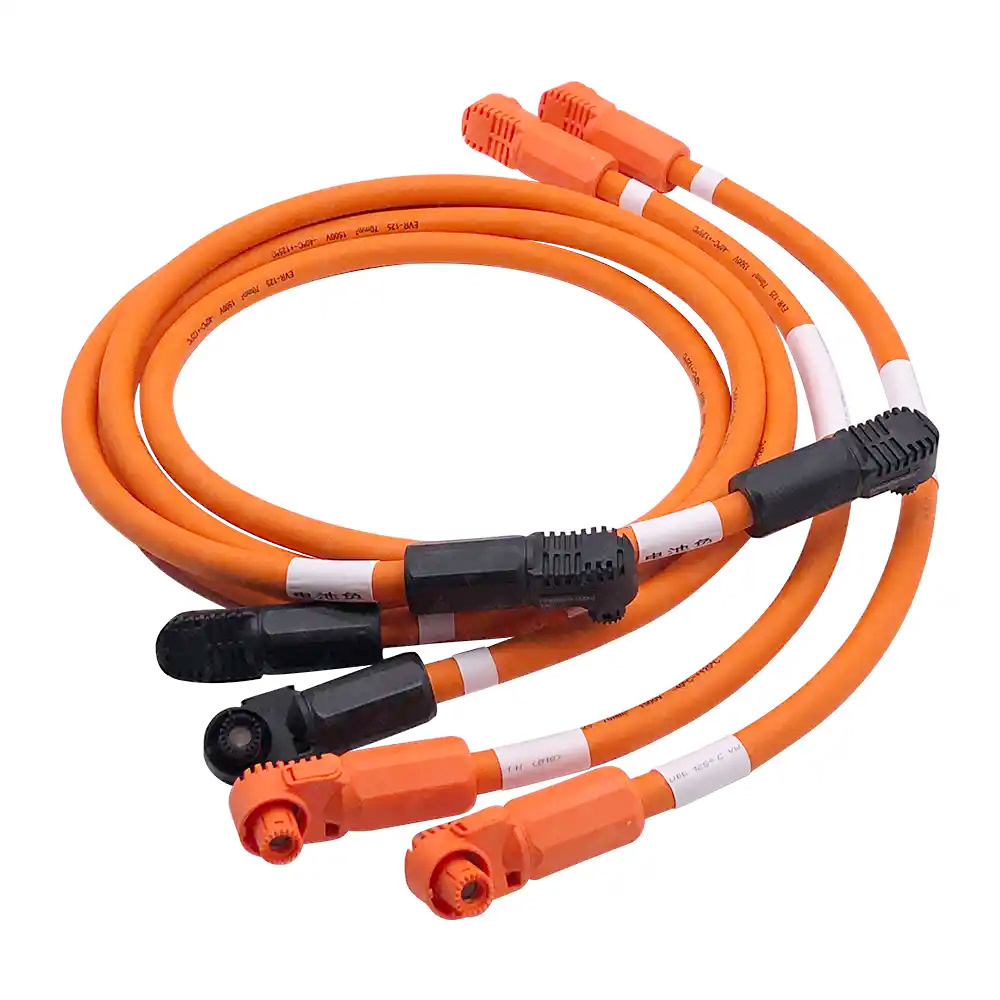
Information
Guide to Cable Selection in the Automotive Manufacturing Industry
Release time: 2025-01-15
In the automotive manufacturing field, wires and cables are like the “nervous system” and “blood vessels,” undertaking the critical tasks of power transmission and signal transmission, their importance is self-evident. High-quality wires and cables not only ensure the stable operation of various systems in the car but also relate to the safety and reliability of the vehicle. If cables are improperly selected, it may lead to circuit failures, electrical fires, and other serious issues, endangering the lives of passengers.
Automotive cables are mainly divided into the following categories based on their use:
- Power cables:Mainly responsible for providing power to various electrical devices in the car, they are an important part of the automotive power system. For example, copper core PVC insulated flexible cables (RVV) are one of the common power cable models. They have good flexibility, making them easy to install and lay in the complex wiring environment of the car. At the same time, PVC insulation material has good insulation performance and weather resistance, effectively preventing leakage and external environmental erosion of the cable, ensuring stable and safe power transmission.
- Ignition cables:Play a crucial role in the car's ignition system, responsible for transmitting the high-voltage electricity generated by the ignition coil to the spark plug, igniting the mixture and allowing the engine to operate normally. Silicone rubber high-voltage wires are a common type of ignition cable. Silicone rubber has excellent high-temperature resistance, able to withstand the high-temperature environment generated during ignition, ensuring that the cable can still work normally at high temperatures, reliably transmitting high-voltage electricity and ensuring the stable operation of the ignition system.
- Sensor cables:Used to connect various sensors and control units in the car, achieving precise signal transmission and providing accurate data support for the car's intelligent control system. For example, shielded low-capacitance cables (UTP) are a type suitable for sensor cables. They use a shielding design to effectively reduce the impact of external electromagnetic interference on signal transmission, ensuring that sensor signals can be accurately transmitted to the control unit, allowing the car's various intelligent control functions to operate normally.
Factors to consider when selecting automotive cable models
- Electrical performance requirements:Different automotive electrical systems have varying electrical performance requirements for cables. For example, power cables need to have sufficient current-carrying capacity to meet the power requirements of electrical devices while ensuring low resistance to reduce energy loss. Sensor cables, on the other hand, have extremely high requirements for the accuracy of signal transmission and anti-interference capability, ensuring that signals do not distort or attenuate during transmission.
- Environmental adaptability:The operating environment of a car is complex and variable, and cables may face different environmental conditions such as high temperatures, low temperatures, humidity, and oil contamination. For example, in high-temperature areas like the engine compartment, cables with good high-temperature resistance should be selected, such as silicone rubber cables; if in areas that may come into contact with oil, the oil resistance of the cable should be considered to ensure that the insulation material does not degrade due to contact with oil.
- Mechanical performance requirements:Cables in cars may be subjected to mechanical stresses such as stretching, bending, and compression. Therefore, it is necessary to choose cables with suitable mechanical performance based on the actual installation location and usage. For example, in areas that frequently need to bend, cables with good flexibility should be selected to prevent conductor breakage or insulation layer damage due to frequent bending.
- Installation space and wiring requirements: The wiring space inside a car is limited and complex, so when selecting cable models, consideration should be given to whether their size and shape are convenient for installation and wiring. Some cables with special structural designs or smaller outer diameters may be more suitable for laying in narrow spaces.
- Cost factors:While meeting automotive performance requirements, cost is also a factor that cannot be ignored. The price of cables varies greatly depending on the material and specifications, requiring a comprehensive consideration of product quality, service life, and cost to choose a cable model with a high cost-performance ratio. .
Quality control points for automotive wires and cables
- Process inspection:During the manufacturing process, each step must be strictly inspected. For example, checking the diameter of conductors, twisting quality, insulation layer thickness, appearance, etc., to promptly identify and correct potential quality issues.
- Performance testing:Finished cables need to undergo comprehensive performance testing, including electrical performance testing (such as voltage resistance, insulation resistance, etc.), physical performance testing (such as tensile strength, bending performance, etc.), and environmental performance testing (such as high and low temperature resistance, humidity resistance, etc.), to ensure that the cables meet the relevant standards and usage requirements of the automotive industry.
- Quality traceability:Establish a complete quality traceability system, recording the source of each batch of raw materials, various parameters during the production process, and the flow of finished products. Once a quality issue arises, it can be quickly traced back to the root cause and appropriate measures taken to resolve it.
In summary, in the automotive manufacturing industry, it is crucial to select the appropriate cable models based on different uses. At the same time, controlling the manufacturing process and quality control points of automotive wires and cables is essential to ensure the stable and reliable operation of the vehicle's electrical system, providing a solid guarantee for the safe driving of the car.
 oversea@hichain.com.cn
oversea@hichain.com.cn
 +8617328576881
+8617328576881










